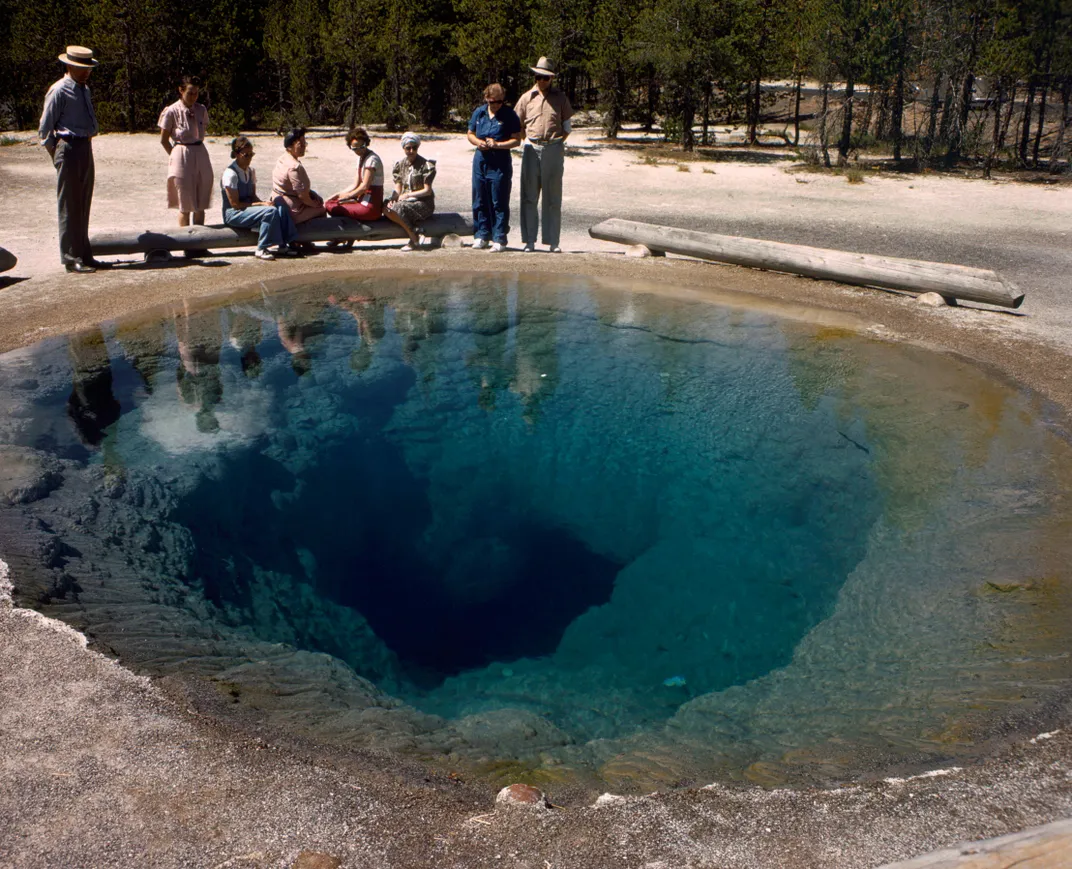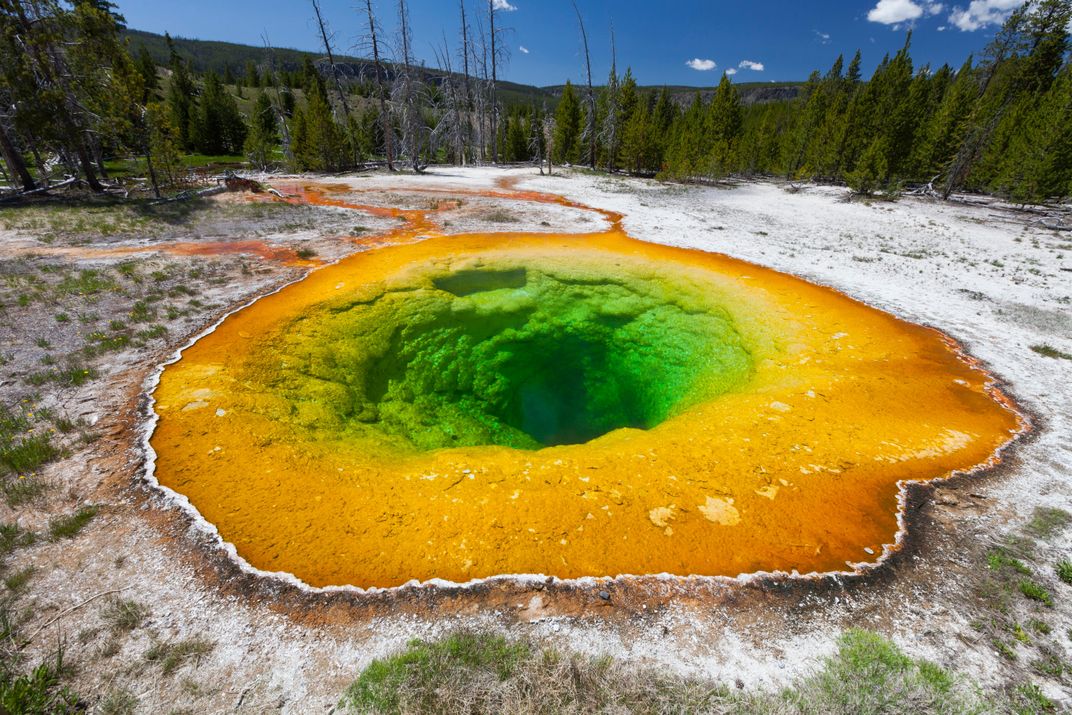Tourist Trash Has Changed the Color of Yellowstone’s Morning Glory Pool
Researchers have found proof of what caused a hot spring’s drastic color modification—it’s people, of course
/https://tf-cmsv2-smithsonianmag-media.s3.amazonaws.com/filer/ce/c4/cec45c5e-aa63-4367-977e-5d756e2e02ee/morning-glory-yellowstone.jpg)
Before the 1960s, Yellowstone’s Morning Glory pool was a deep, sometimes tropical-looking blue.
It was named after the flower that its color resembled. If you had visited Yellowstone in the 1940s, the pool would have looked something like this:

But then, the water’s color changed. The pool took on a distinctive hue, a Wicked Witch of the West-style green with orange and yellow edges. If you visit today, it looks something like this:

What caused the change? There was always a prime suspect: humans. Visitors to Yellowstone have been known to throw pennies, rocks and all sorts of garbage into Morning Glory. But their culpability wasn’t proven until recently, when a group of researchers created a mathematical model, based on optical measurements, that intended to explain just what happened.
The researchers found, according to Adam Hoffman over at Science Friday, that the blame did indeed lay mostly with the junk tossed into the spring by decades of tourists. All of that debris ultimately could have clogged up parts of the heat source hidden beneath the water’s surface and caused the pool’s temperature to lower.
At a lower temperature, the pool became a happy home to “photosynthetic microorganisms that probably didn’t live there before,” writes Hoffman. He explains further:
Pigments produced by swaths of those microbes—called microbial mats—are responsible, at least in part, for the brilliant yellows, greens, and oranges that now tinge Morning Glory and other thermal pools in Yellowstone. Each species has a preferred temperature, according to Brent Peyton, director of the Thermal Biology Institute at Montana State University. Because the springs are “hottest at the center and typically coolest at the edges,” a color gradient appears, he says.
The hues are also influenced by how light interacts with the water’s depth—turning it yellow and orange in the shallows and green in the deep end.
The team’s mathematical model helps predict and explain Morning Glory’s color (and that of other springs in Yellowstone) “based on the interplay between light and the microbial mats,” reports Hoffman. The researchers published their findings in the Journal of Applied Optics.
“Our paper describes a very simple, 1-dimensional model, that gives the first clue if you really want to do more,” one of the study’s authors told the Optical Society. The researchers hope to collaborate with biologists to keep an eye on the chemical and biological composition of these pools and better develop the role optics might play in such research.
It seems like it'd be easy to reverse this effect: remove the trash from Morning Glory’s heat source in an attempt to restore its old, blue self. But there’s no formal word so far on whether such efforts would be possible—or effective. But you can bet that Yellowstone officials will take a firm hand to anyone caught making a lucky-penny wish into the pool. After all, no one likes a litterbug—except, perhaps, some of Morning Glory’s cooler water-loving microbes.
/https://tf-cmsv2-smithsonianmag-media.s3.amazonaws.com/accounts/headshot/lauraclark.jpeg)
/https://tf-cmsv2-smithsonianmag-media.s3.amazonaws.com/accounts/headshot/lauraclark.jpeg)